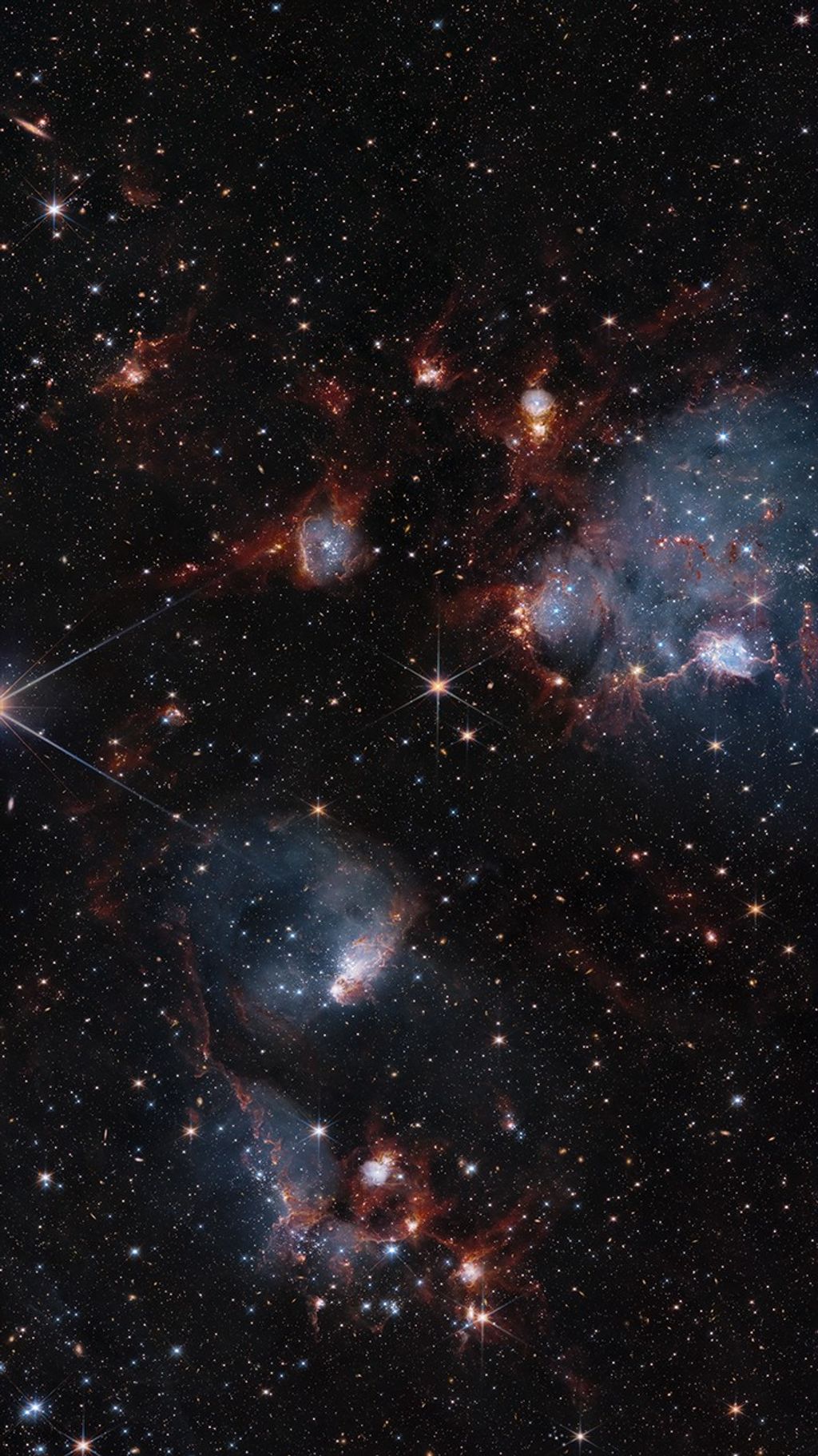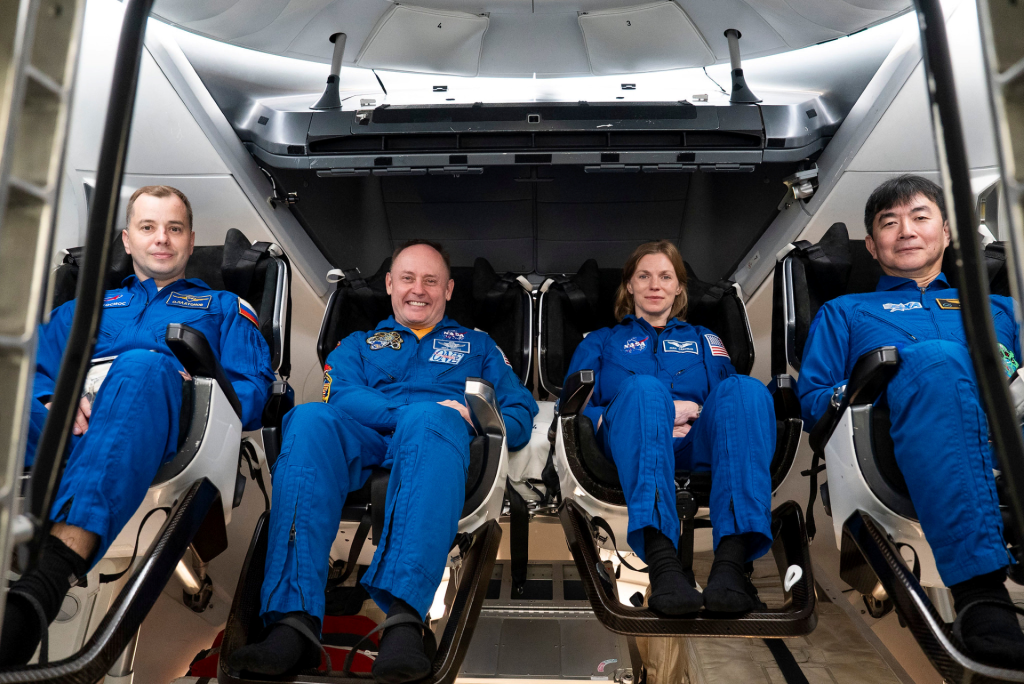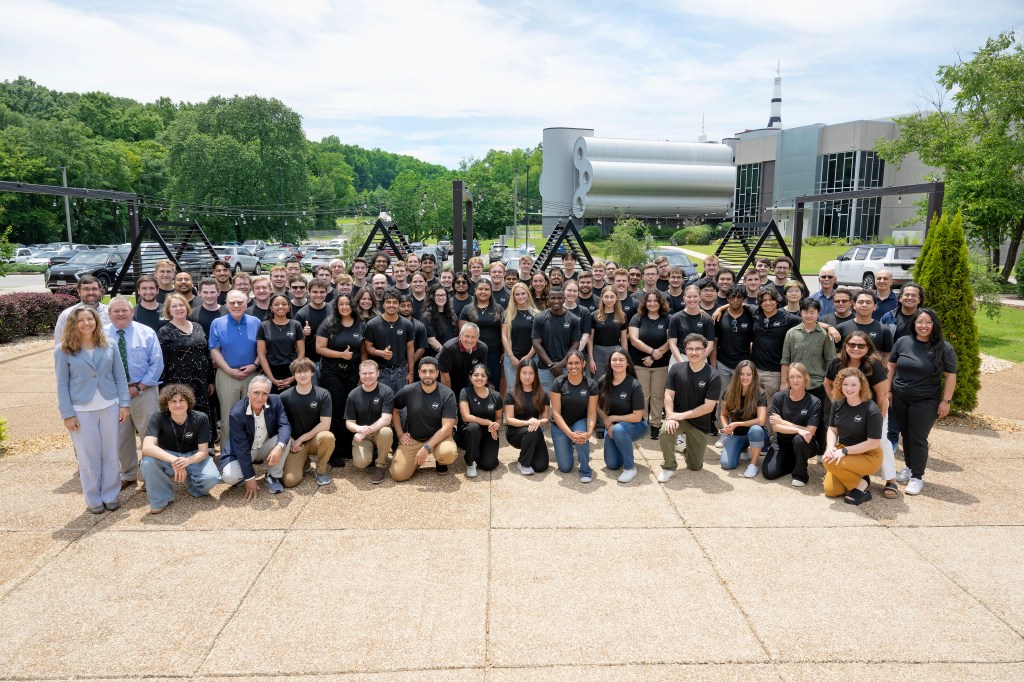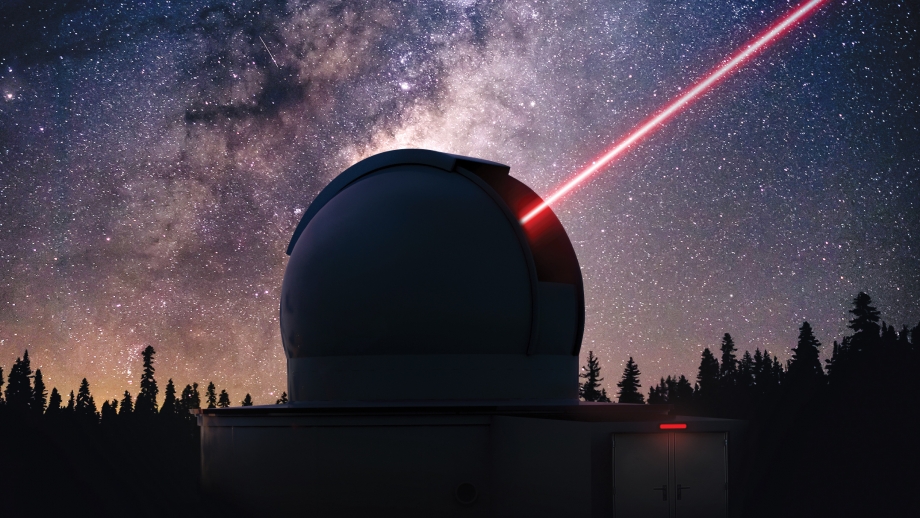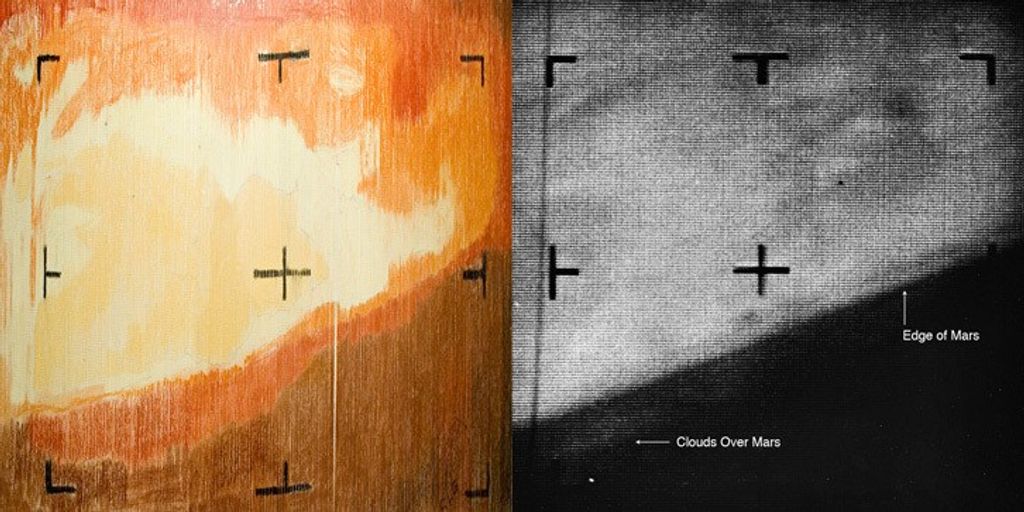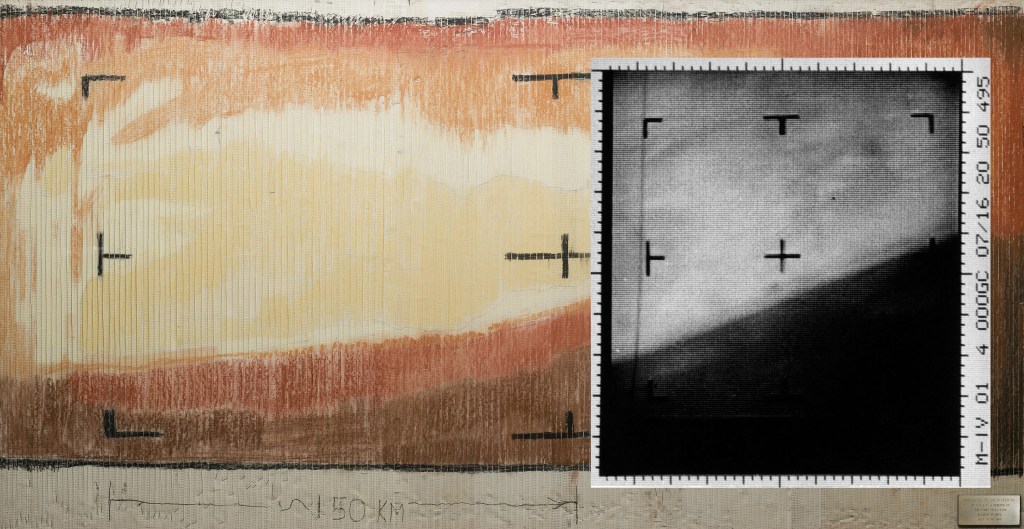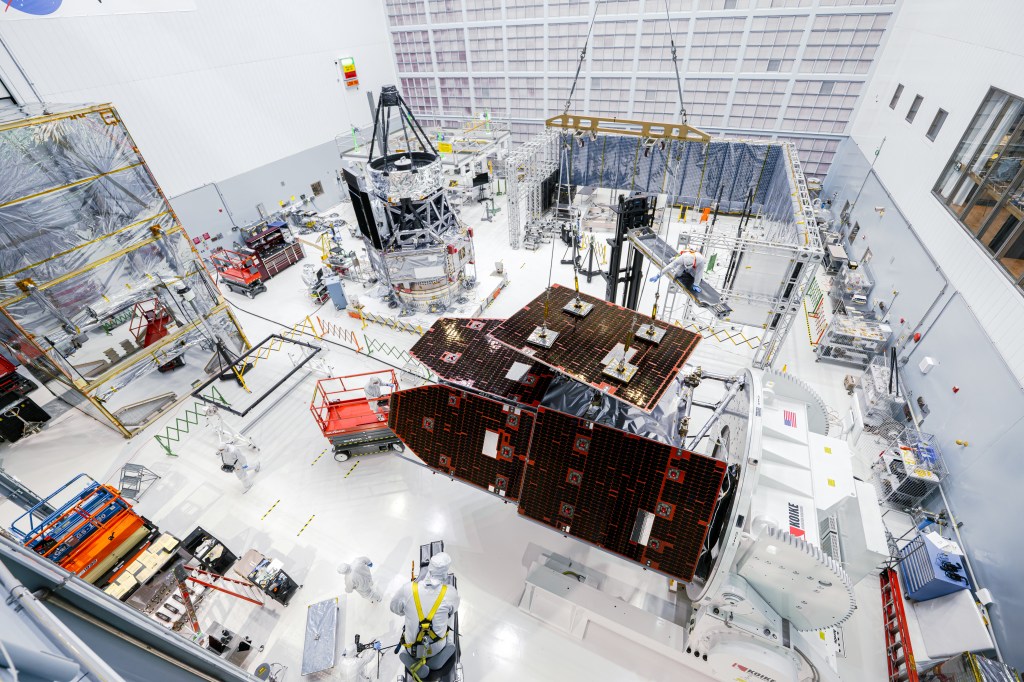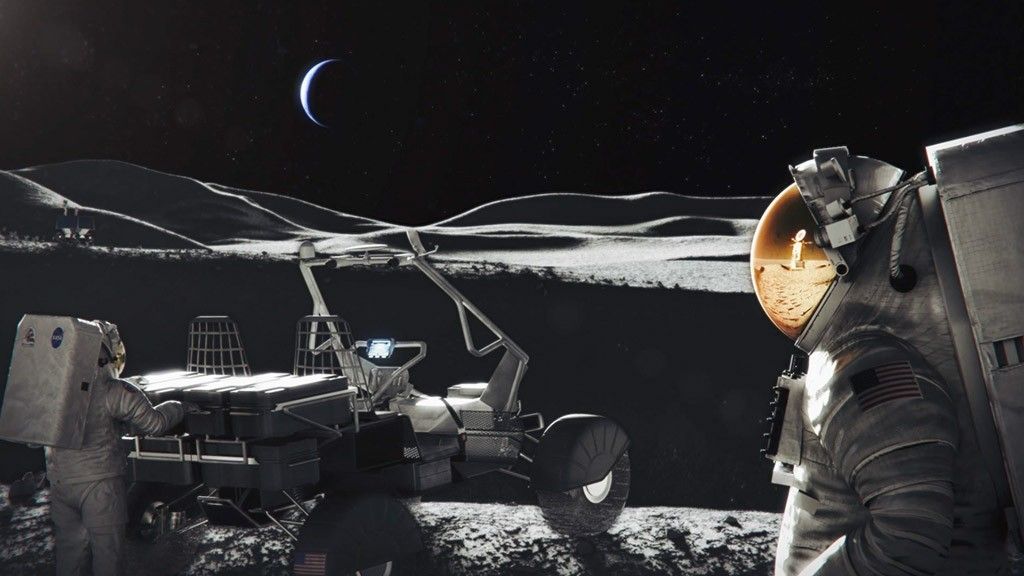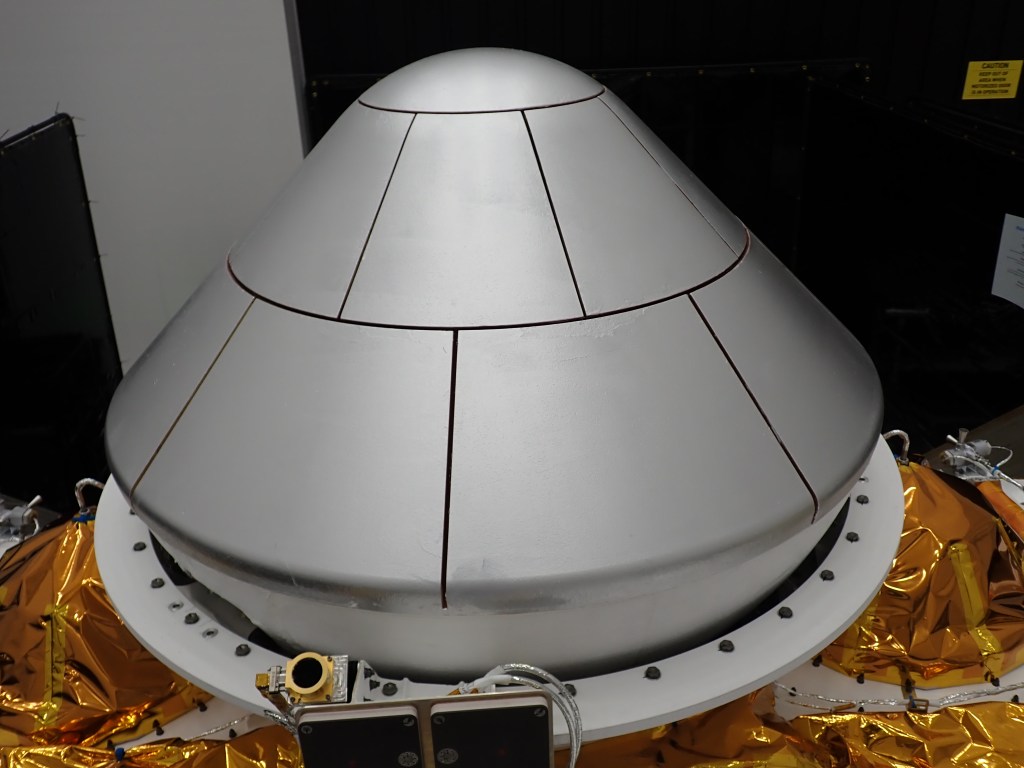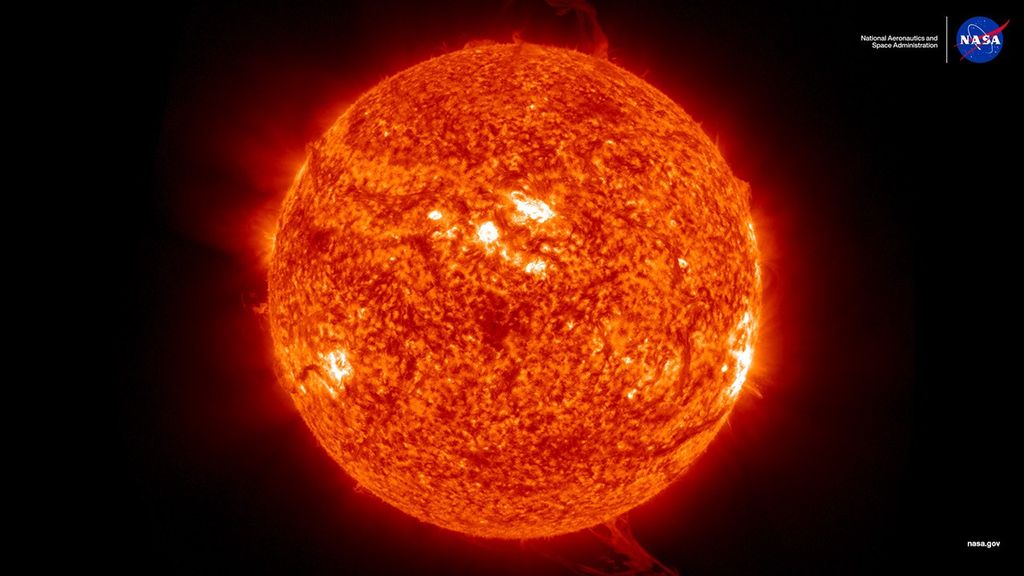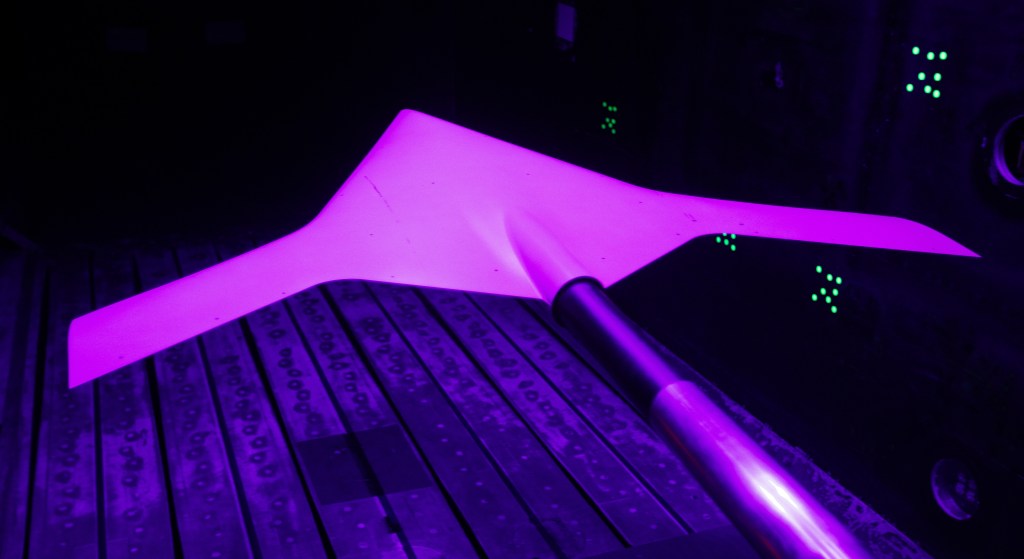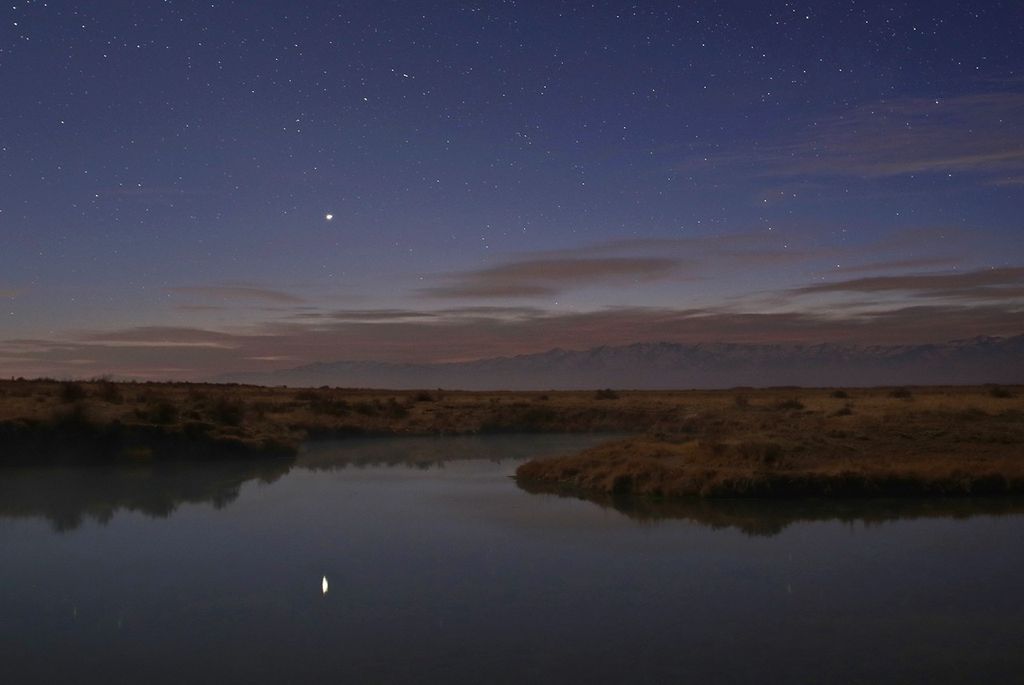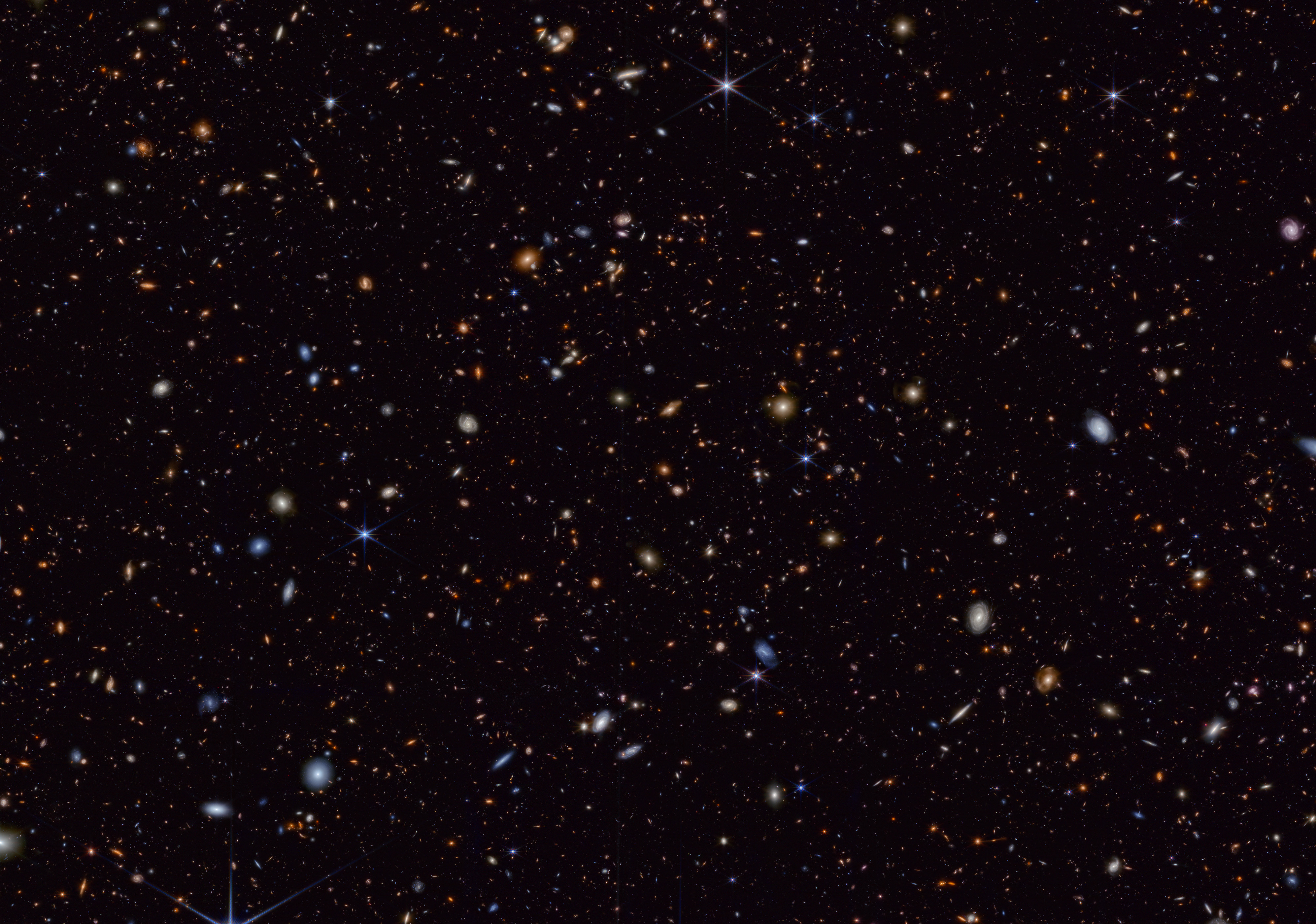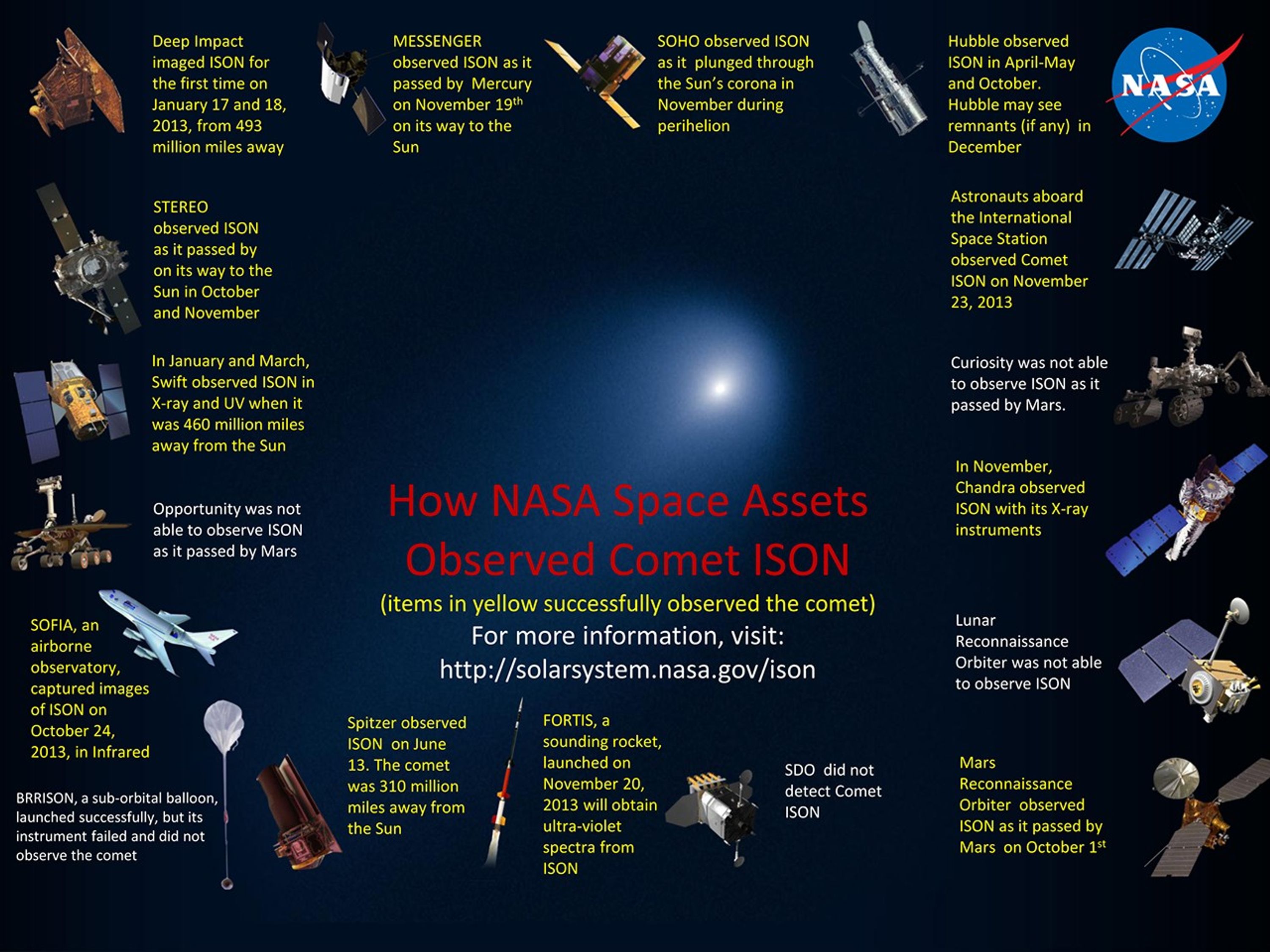How NASA Space Assets Observed Comet ISON
December 4, 2013
| Credit | NASA |
|---|---|
| Language |
|
An unprecedented space fleet tracked comet ISON:
- Solar Dynamics Observatory: SDO did not detect the comet.
- SOHO: SOHO observed ISON as it plunged through the Sun's corona in November during perihelion.
- STEREO: STEREO observed ISON as it passed by on its way to Sun in October.
- MESSENGER: MESSENGER observed ISON as it passed by Mercury on November 19th on its way to the sun.
- BRRISON: BRRISON, a sub-orbital balloon, launched successfully, but its instrument failed and did not observe the comet.
- FORTIS: FORTIS, a sounding rocket, launched on November 20, 2013 will obtain ultra-violet spectra from ISON.
- Hubble Space Telescope: Observed ISON in April-May and will see it again in October and December (if ISON survives).
- Spitzer Space Telescope: Hubble observed ISON in April-May and October. Hubble may see remnants (if any) in December.
- Chandra X-ray Observatory: In November, Chandra observed ISON with its X-ray instruments.
- International Space Station: Astronauts aboard the International Space Station observed Comet ISON on November 23, 2013.
- Lunar Reconnaissance Orbiter: Lunar Reconnaissance Orbiter was not able to observe ISON.
- Swift: In January and March, Swift observed ISON in X-ray and UV when it was 460 million miles away from the sun.
- Curiosity: Curiosity was not able to observe ISON as it passed by Mars.
- Opportunity: Opportunity was not able to observe ISON as it passed by Mars.
- Mars Reconnaissance Orbiter: Mars Reconnaissance Orbiter observed ISON as it passed by Mars on October 1st.
- Deep Impact: Deep Impact imaged ISON for the first time on January 17 and 18, 2013, from 493 million miles away.
- SOFIA: SOFIA, an airborne observatory, captured images of ISON on October 24, 2013, in Infrared.

